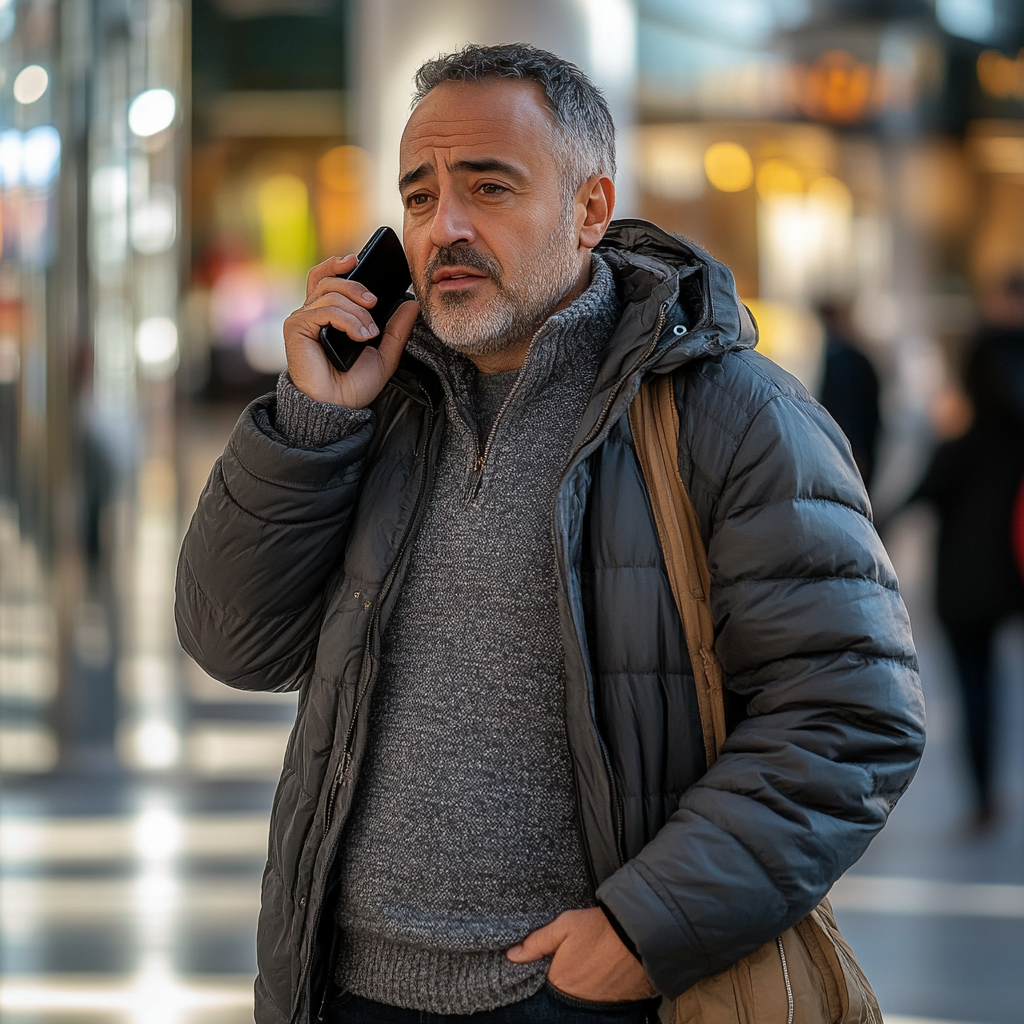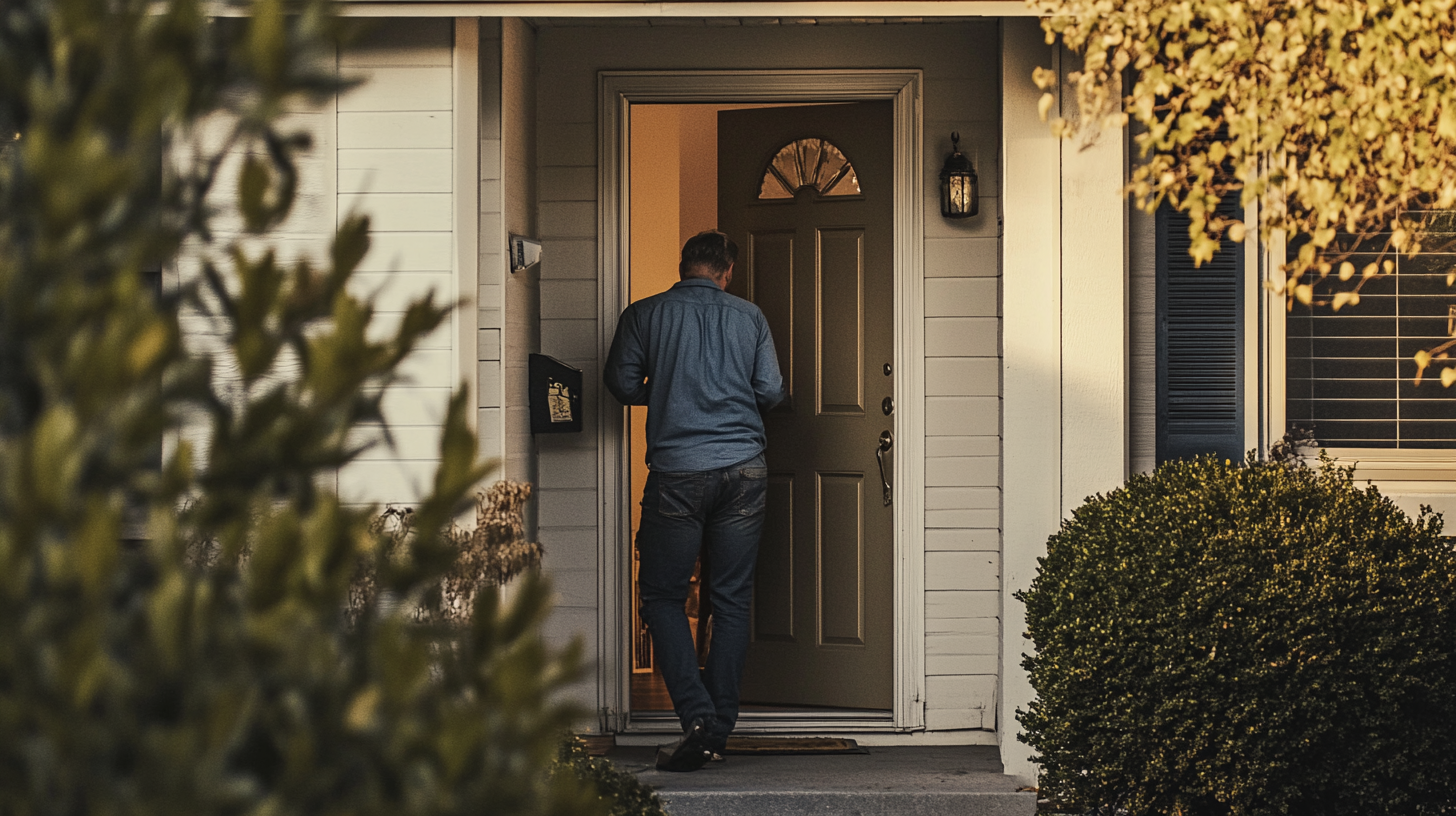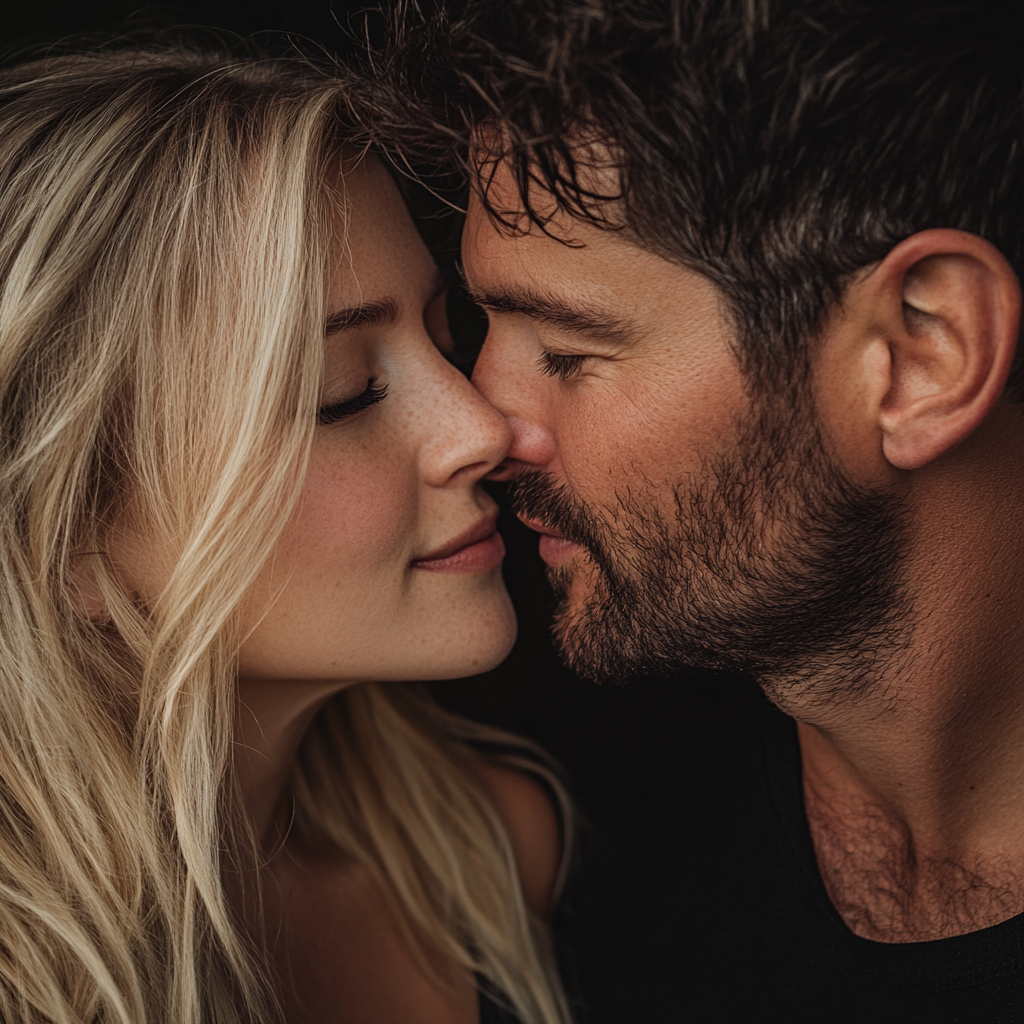Brenda Lee’s name may not be as recognizable as some of the other music stars from the 1960s but when you think of Christmas, you’ll know her song, and start humming her catchy tune, “Rockin’ Around the Christmas Tree.”
When Lee, now 78, first hit the stage, she wasn’t old enough to drive but her powerful vocals steered her “unprecedented international popularity” as the most successful female artist of the 1960s.
Lee, whose voice defied her diminutive stature at only 4 foot 9, became a fan favorite when she was only 12.
Brenda May Tarpley, born in 1944, got her start in the late 1940s, became huge in the 1950s, and over her career–that started before she left elementary school–she topped the charts 55 times, earning the title as the most successful female recording artist of the 1960s.
When Lee was only eight (according to Rolling Stone), her father, a construction worker, was killed at work and little Brenda–who then changed her last name to Lee–became the family’s primary provider.

Taking care of her younger brother, big sister, and mother–a cotton mill worker–was not a duty, but something she wanted to do. She said that she was thrilled when she made her first $20, so she could help her family: “Even at that young age, I saw that helped our life,” Lee said, adding “It put some food on the table. It helped, and I loved it.”
The Atlanta-born chanteuse, called a “pioneer of early rock and roll,” by the Georgia Encyclopedia, achieved “unprecedented international popularity in the 1960s.”
But, an incredibly humble human, Lee credits those who helped her achieve her dreams. When Christianity Today asked what she thinks about being a legend, Lee said “I don’t think of myself that way!” She continued, “I’m just a girl who’s been blessed to be doing what I’m doing, and there’s a lot of people who’ve sweated a lot of tears and put a lot of life’s work into me to be able to have my dream. So, if I’m a legend, then they’re legends, too.”
In 1956, the young girl joined country star Red Foley for a show at the Bell Auditorium near her home in Augusta, and she belted out “Jambalaya,” by Hank Williams.

She was then signed to appear on Foley’s Ozark Jubilee, a country music show, where millions of viewers fell in love with the sassy 12-year-old whose talent was developed well beyond her age.
In the same year, Lee signed with Decca Records, and the next year, she moved to Nashville, Tennessee, and fusing country with rhythm and blues–highlighted by her hiccupping vocals–she recorded early rockabilly classics like “BIGELOW 6-200,” “Little Jonah,” and “Let’s Jump the Broomstick.”
When asked if–when as a young girl–she was nervous performing in front of large crowds, she answered: “No, not really. Nobody ever told me to be nervous. The stage always felt like a hometown to me because I had been in front of people ever since I was 3 years old, singing to people. So it was a very comfortable spot for me.”
In 1957, Lee earned the nickname “Little Miss Dynamite” for her pint-sized powerhouse recording of the song “Dynamite,” and in 1958, fans heard “Rockin’ around the Christmas Tree,” a genre and generation-crossing holiday standard, released when she was only 13.
“I knew it was magical,” she told Rolling Stone.
Over the next couple of years, she charted with hits like “Sweet Nuthin’s,” “All Alone Am I,” and “Fool #1.”
Most of her songs, however, contradicted her experience as a young girl. Her mother didn’t let her date and she graduated high school not understanding the heartbreak of young love.

She was only 16 when she said “Love could be so cruel” in the song “I’m Sorry” and only 16 when she said “I want his lips to kiss me” in the song “I Want to be Wanted,” both back-to-back hits when she was still in school.
And when she turned 18, she met Ronnie Shacklett, whom she’s now been happily married to for 60 years.
Life on the road for Lee as a youngster had its difficulties. She celebrated her 12th birthday in Las Vegas and speaking with the Las Vegas Journal, Lee explained her loneliness.
“Of course, I wasn’t even allowed to walk through a casino, I was so young. So I didn’t even know what a casino looked like. They took me into the kitchen, then into the showroom. And then when my show was over, I was brought back out through the kitchen and back up to my room. Children weren’t allowed … in the casino area.” She continued, “There wasn’t anything to do in Vegas for a kid. The most fun I had was on the stage.”
Speaking on what she missed out on as a child, the award-winning Lee said, “Many times, I yearned to be with my friends rather than be out there on the road.”
Turns out she made new friends on the road, like with the music group that opened for her at a 1962 show in Germany. “I hung out with John,” she says effortlessly, speaking of John Lennon. “He was extremely intelligent, very acerbic with his jokes, just a gentle person. When I found out that they later said they were fans of my music, I was just floored.”

Eu segui meu noivo em sua repentina viagem de negócios logo antes do nosso casamento e descobri a verdade de partir o coração — História do dia

Dois dias antes do meu casamento, meu noivo Robert soltou uma bomba — ele teve que sair para uma viagem repentina. Algo parecia errado, e quando uma ligação do chefe dele não fez sentido, eu o segui. O que eu descobri não foi o que eu esperava, me deixando questionando a confiança, o amor e o homem com quem eu estava prestes a me casar.
Quando fiz trinta anos, não pude deixar de sentir um medo crescente de que talvez nunca me casasse. Fiquei preocupada que o amor tivesse passado por mim. Mas aqui estava eu — a apenas dois dias de me tornar uma esposa.

Apenas para fins ilustrativos. | Fonte: Midjourney
Parecia um sonho. Eu estava prestes a começar um novo capítulo com Robert, o homem que roubou meu coração e me mostrou o que o amor realmente poderia ser. Robert era tudo o que eu sempre quis: inteligente, doce e infinitamente gentil.
Mesmo quando eu estava chateada, ele conseguia me fazer rir com suas piadas bobas ou seu sorriso caloroso. Eu me sentia completa.
Mas essa alegria vacilou no momento em que Robert entrou no quarto. Sua expressão inquieta me deixou paralisada. Algo estava errado.

Apenas para fins ilustrativos. | Fonte: Midjourney
“O que há de errado?”, perguntei assim que notei sua expressão preocupada.
Robert hesitou, esfregando a nuca. “Katherine, sinto muito, mas tenho que fazer uma viagem de trabalho.”
“O quê?”, eu disse, franzindo a testa. “Mas nosso casamento é em dois dias.”
“Eu sei,” ele disse, sua voz suave. “Prometo que voltarei a tempo. Talvez até na noite anterior ao casamento.”

Apenas para fins ilustrativos. | Fonte: Midjourney
“Você está falando sério agora? Você está me deixando sozinha em um momento como esse?” Minha voz estava mais áspera do que eu pretendia, mas não consegui evitar.
Robert suspirou e se aproximou. “Eu não iria se não fosse importante. Tudo já está planejado, então nada deve dar errado. Sinto muito que esteja acontecendo desse jeito, mas eu realmente tenho que ir.”
“Mas por quê?”, perguntei, sentindo o calor subindo em meu rosto. As palavras me faltaram enquanto eu tentava manter minhas emoções sob controle.

Apenas para fins ilustrativos. | Fonte: Midjourney
Robert me puxou para um abraço, me segurando com força. “Eu odeio fazer isso com você, mas temos a vida inteira pela frente. Eu sempre estarei aqui para você, Katherine.”
“Quem vai com você?”, perguntei, minha voz mais baixa agora.
“Travis. É por isso que é tão importante”, ele disse. Eu sabia que Travis era seu chefe, e eu entendia. Ainda assim, eu queria gritar como uma criança. Mas eu engoli. Eu era um adulto, afinal.

Apenas para fins ilustrativos. | Fonte: Midjourney
“Tudo bem,” eu disse depois de uma longa pausa. “Mas pense em como você vai me compensar enquanto estiver fora.”
Robert riu baixinho, seus lábios roçando minha testa. “Tudo bem,” ele disse. Então, ele se virou e começou a fazer as malas.
Robert se moveu rapidamente, dobrando roupas e colocando-as em sua mala. Fiquei na cama, observando-o silenciosamente, esperando que ele mudasse de ideia. Cada item que ele embalava parecia um passo mais longe de mim.

Apenas para fins ilustrativos. | Fonte: Midjourney
Meus olhos vagaram até a beirada da cama onde estavam suas passagens aéreas. O destino chamou minha atenção.
Não achei que a empresa dele funcionasse naquela cidade. Talvez eles estivessem se expandindo, pensei, tentando me convencer de que fazia sentido.
Quando ele terminou, eu o acompanhei até a porta. Ele me abraçou forte, me deu um beijo de despedida e foi embora. Minutos depois, meu telefone tocou.

Apenas para fins ilustrativos. | Fonte: Midjourney
Ver o nome de Travis fez meu coração pular. Por que ele estava ligando? Alguma coisa aconteceu com Robert?
“Alô? Está tudo bem?”, perguntei, com a voz trêmula enquanto agarrava o telefone.
“Está tudo bem”, Travis disse calmamente. “Só queria avisar que não poderei ir ao seu casamento. Estarei viajando a trabalho. Mas ainda assim gostaria de enviar um presente para você e Robert. Como posso entregá-lo a você?”

Apenas para fins ilustrativos. | Fonte: Midjourney
Meu estômago apertou. “Espera, Robert vai voltar para o casamento, certo?”, perguntei, sentindo um nó de confusão.
“Katherine, não sei bem o que você quer dizer”, Travis disse, parecendo confuso. “Eu nunca mandaria Robert em uma viagem tão perto do casamento dele. Ele disse que eu fiz isso?”
Eu congelei, lutando para pensar em uma resposta. “Ah, não. Devo ter entendido errado”, eu disse rapidamente. “Eu te aviso sobre o presente.”

Apenas para fins ilustrativos. | Fonte: Midjourney
“Okay,” Travis disse, seu tom incerto. “Me avise se precisar de alguma coisa.” Então ele desligou.
Sem hesitar, peguei minha bolsa, minha carteira e meu casaco, deixando tudo para trás. Minha mente correu enquanto eu dirigia para o aeroporto.
Robert tinha mentido para mim. Eu não sabia por que, mas precisava de respostas. A incerteza era insuportável.

Apenas para fins ilustrativos. | Fonte: Midjourney
Minhas mãos tremiam enquanto eu reservava uma passagem para o voo dele. Por sorte, ainda havia assentos disponíveis.
Na segurança, tentei tirar os sapatos e o casaco, sentindo como se todos estivessem me olhando.
Depois de passar, prendi meu cabelo em um capuz e coloquei óculos escuros. Examinei a área de espera e então o vi.

Apenas para fins ilustrativos. | Fonte: Midjourney
Robert sentou-se perto do portão, com a cabeça baixa, olhando para o telefone. Eu me posicionei longe o suficiente para passar despercebido, mas perto o suficiente para segui-lo.
Quando o voo foi chamado, deixei-o embarcar primeiro. Meu coração batia forte enquanto o seguia para dentro do avião, mantendo distância.
Eu não conseguia acreditar que estava fazendo isso, mas eu tinha que saber a verdade. O voo parecia interminável. Toda vez que Robert se mexia no assento, eu me perguntava o que ele estava pensando.

Apenas para fins ilustrativos. | Fonte: Midjourney
Quando pousamos, eu o avistei novamente e o segui para fora. Ele chamou um táxi, então eu fiz o mesmo.
“Siga aquele carro, mas mantenha distância”, eu disse ao meu motorista, que me lançou um olhar curioso, mas assentiu. Meu pulso acelerou enquanto dirigíamos.
O carro parou em frente a uma pequena casa em um bairro tranquilo. Pedi ao meu motorista para parar algumas casas adiante e paguei-o rapidamente.

Apenas para fins ilustrativos. | Fonte: Midjourney
Escondido atrás de uma árvore, observei Robert sair do táxi. Ele hesitou na porta, então bateu.
Prendi a respiração, observando atentamente. Depois de um momento, a porta se abriu e alguém deu um passo à frente.
Da minha posição atrás da árvore, não consegui ver quem era, mas a silhueta deles fez meu peito apertar. Então, para minha descrença, Robert entrou.

Apenas para fins ilustrativos. | Fonte: Midjourney
Fiquei ali por um momento, congelado. Reunindo minha coragem, rastejei para mais perto da casa.
Minhas mãos tremiam enquanto eu espiava por uma janela próxima, minha respiração embaçando o vidro. O que eu vi fez meus joelhos dobrarem.
Robert estava lá dentro, sentado com uma mulher que eu não reconheci. Ele se inclinou e a abraçou, do jeito que sempre me abraçava.

Apenas para fins ilustrativos. | Fonte: Midjourney
Lágrimas turvaram minha visão, escorrendo pelo meu rosto enquanto meu coração se despedaçava. Eu não conseguia entender o que estava vendo.
Não sei quanto tempo fiquei ali, congelado e tremendo. O som da porta da frente se abrindo me trouxe de volta à realidade.
Em pânico, me abaixei para dentro dos arbustos, agachando-me para ficar escondido. Do meu esconderijo, vi Robert sair, sua expressão ilegível. Ele subiu em outro táxi e saiu sem olhar para trás.

Apenas para fins ilustrativos. | Fonte: Midjourney
Reunindo toda a coragem que eu tinha, saí do meu esconderijo e me aproximei da porta. Minhas pernas estavam trêmulas e meu peito estava apertado quando levantei minha mão para bater.
Depois de alguns momentos, a mesma mulher que eu tinha visto antes abriu a porta. Ela olhou para mim com preocupação, seu olhar suavizando quando ela notou as lágrimas escorrendo pelo meu rosto.
“Você está bem? Como posso ajudá-lo?” ela perguntou gentilmente, com a voz calma.

Apenas para fins ilustrativos. | Fonte: Midjourney
Engoli em seco, minhas palavras mal se formando. “Sou a noiva de Robert”, eu disse, minha voz tremendo. “Em dois dias, eu supostamente serei sua esposa.”
Seus olhos se arregalaram em choque. “Oh”, ela disse, sua mão se movendo para o batente da porta como se para se firmar. “Por favor, entre.” Ela deu um passo para o lado, gesticulando para que eu entrasse.
Ela me levou até a cozinha, onde puxou uma cadeira para mim e me entregou um copo de água.

Apenas para fins ilustrativos. | Fonte: Midjourney
Eu bebi devagar, minhas mãos tremendo. Ela sentou-se na minha frente, sua expressão ainda gentil, mas cautelosa.
“Eu sei como isso deve parecer”, ela disse depois de um momento de silêncio. “Mas eu prometo, não é o que você pensa. Meu nome é Liz. Eu sou o primeiro amor de Robert.”
As palavras me atingiram como um soco no estômago. “Isso não melhora as coisas”, eu disse, segurando o copo com força. Meus pensamentos eram um turbilhão de raiva e confusão.

Apenas para fins ilustrativos. | Fonte: Midjourney
Liz suspirou e se inclinou para frente, seu tom firme. “Ele não te traiu, se é isso que te preocupa. Quando Robert era mais novo… ele não era o mesmo homem que você conhece agora.”
“O que você quer dizer?”, perguntei, minha voz mais áspera do que eu pretendia.
“Nosso relacionamento não era saudável”, Liz disse simplesmente. “Havia coisas que ele precisava consertar em si mesmo. Ele veio aqui para se desculpar.”

Apenas para fins ilustrativos. | Fonte: Midjourney
“Pedir desculpas? Por que agora? Por que antes do nosso casamento?”, perguntei, meu peito apertando novamente.
“Porque ele não queria carregar o peso dos erros dele para o futuro com você”, disse Liz. “Ele me disse que te ama profundamente. Ele queria fazer as pazes com o passado para que isso não afetasse a vida de vocês juntos.”
Balancei a cabeça, minha voz tremendo. “Por que ele não me contou? Por que mentir?”

Apenas para fins ilustrativos. | Fonte: Midjourney
Liz me deu um pequeno sorriso compreensivo. “Todos nós temos coisas que carregamos. Algumas compartilhamos, e outras não. Estou felizmente casada agora, com dois filhos. Robert falou sobre você como se você fosse o mundo inteiro dele. Vocês farão um ao outro feliz. Nós nunca fomos feitos para sermos felizes juntos, mas você e Robert serão.”
Eu assenti lentamente, inseguro sobre como me sentir. Liz se ofereceu para me deixar ficar até meu voo.

Apenas para fins ilustrativos. | Fonte: Midjourney
Ao conhecer sua família, vi o amor em seus olhos pelo marido. Isso me lembrou de como eu me sentia em relação a Robert. Lentamente, comecei a me acalmar.
Cheguei em casa assim que a primeira luz do amanhecer estava raiando. Robert estava esperando na porta, seu rosto cheio de preocupação. No momento em que me viu, ele me puxou para um abraço apertado.

Apenas para fins ilustrativos. | Fonte: Midjourney
“Katherine, onde você estava?” ele perguntou, sua voz tensa. “Eu estava tão preocupado. Liguei para você tantas vezes, e você não atendeu. Pensei que algo tinha acontecido.”
Hesitei, inseguro sobre como começar. “Não é… não sei o que dizer”, finalmente admiti.
Robert deu um passo para trás, suas mãos ainda em meus ombros. “Então deixe-me começar. Eu menti para você”, ele disse. “Eu não estava em uma viagem de trabalho—”

Apenas para fins ilustrativos. | Fonte: Midjourney
“Eu sei”, interrompi, olhando em seus olhos.
Ele assentiu, seu rosto cheio de arrependimento. “Sinto muito por mentir. Eu deveria ter te contado, mas juro que não fiz nada de errado.”
“Eu sei”, eu disse suavemente. “E eu também sinto muito.”
Robert franziu a testa. “Por que você está se desculpando?”

Apenas para fins ilustrativos. | Fonte: Midjourney
“Porque eu duvidei de você”, eu disse, minha voz tremendo. “Eu te segui depois que Travis ligou e me disse que você não estava com ele. Eu fui até a casa de Liz. Eu conversei com ela. Ela explicou tudo.”
O rosto de Robert se suavizou. “Katherine, eu te amo”, ele disse. “Só você. Quero passar o resto da minha vida com você.”
Senti um peso sendo tirado do meu peito. “Eu sei. Agora tenho certeza disso”, eu disse, me inclinando para beijá-lo.

Apenas para fins ilustrativos. | Fonte: Midjourney
Diga-nos o que você acha dessa história e compartilhe com seus amigos. Pode inspirá-los e alegrar o dia deles.
Se você gostou desta história, leia esta: Aos nove meses de gravidez, pensei que me abaixar para limpar seria a parte mais difícil da minha vida. Mas a distância do meu marido e uma descoberta chocante em seu armário me fizeram questionar tudo. Quando descobri contas estranhas e uma verdade que ele estava escondendo, soube que tinha que encarar o que estava nos separando.
Este artigo é inspirado em histórias da vida cotidiana de nossos leitores e escrito por um escritor profissional. Qualquer semelhança com nomes ou locais reais é mera coincidência. Todas as imagens são apenas para fins ilustrativos.



Leave a Reply